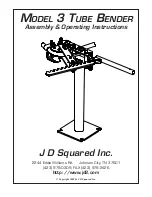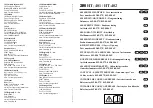
4. Precisely align the Trillium Compact to north-south by:
l
Using the north-south vertically scribed marks
. Align the vertical north-
south scribe lines on the base of the seismometer with the line drawn on the
installation surface. See
.
l
Using the north-south guide.
Align the case-top north-south guide to the
staked line, laser level line, or straight edge. See
.
Some care is required when aligning the seismometer to avoid sighting at an angle
and introducing a parallax error.
5. After aligning the seismometer, verify that it is still level. It may need to be adjusted due
to unevenness of the installation surface.
6. If you re-leveled the Trillium Compact Vault and you are leveling it with the adjustable
feet, ensure the feet are locked when finished.
3.8 Theory and Practice of Insulation
Seismometer installations must be thermally insulated to achieve optimal performance,
particularly at long periods. There are two broad categories of thermal effects that can cause
unwanted noise:
l
Direct thermal sensitivity.
The Trillium Compact Vault is designed to minimize
temperature sensitivity; however, like all seismometers, it has some residual thermal
response. There are several components in a seismometer that are temperature
sensitive, such as the springs that suspend the inertial masses. The effect of direct
thermal sensitivity typically shows up as very long period noise on the vertical channel,
in particular, a periodic diurnal variation in response to the day-to-night temperature
cycle.
l
Thermally induced tilt.
All seismometers are susceptible to thermally induced tilt. Tilt
converts the strong vertical acceleration of gravity into an apparent horizontal
acceleration. There are many mechanisms for the conversion of temperature into tilt.
For example:
l
Movement of air surrounding the seismometer can cause non-uniform thermal
expansion or contraction of the pier and the seismometer. Such effects typically
Chapter 3 - Installing a Trillium Compact Vault Seismometer
16889R10 • 2020-11-12
Page 40
















































